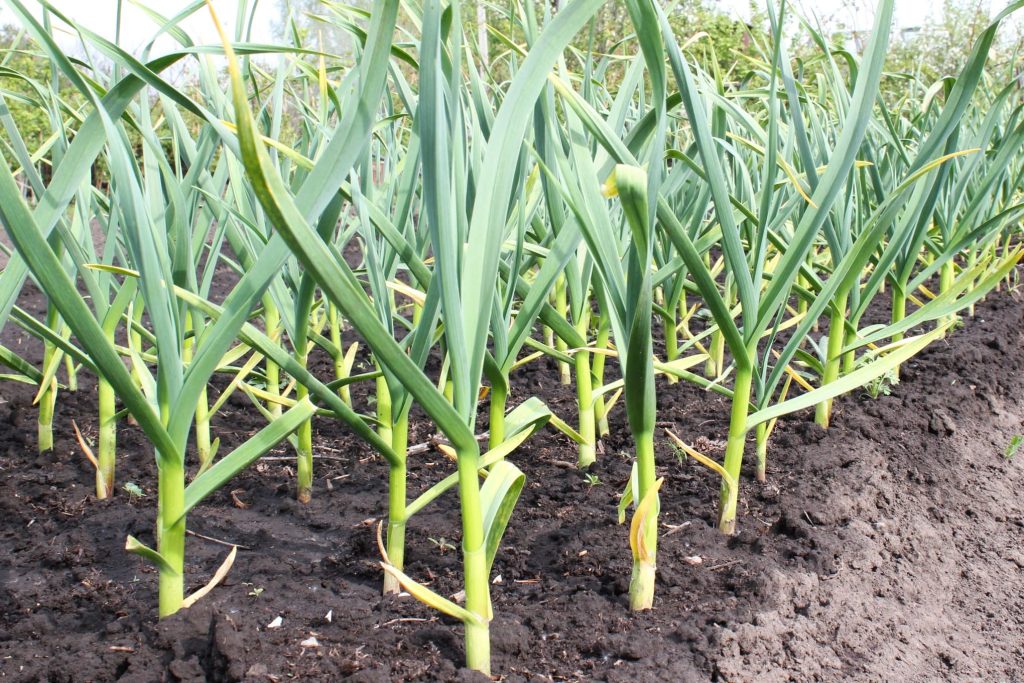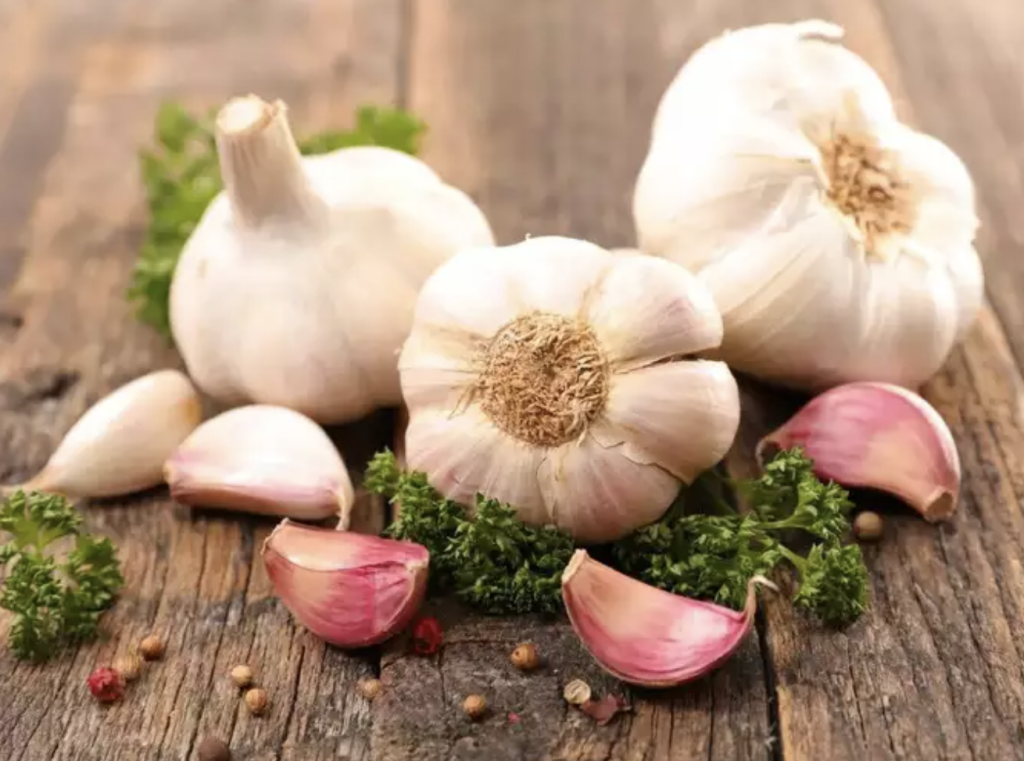Growing garlic gives you an ample supply of one of nature’s best healing herbs. Garlic is one of those amazing plants that has been used by mankind since recorded history. There are many different types of garlic, with most belonging to the Alium sativum group of plants.
Garlic is known mainly for its bulbs, however, all parts of the plant can be used.
Besides flavouring, garlic has uses ranging from culinary to medicinal. For example, garlic stems work great in stir-fries. Throughout history, garlic has been used for ailments ranging from depression, heart disease, male potency and the father of modern medicine Hippocrates using garlic as part of his therapeutic armamentarium. And believe it or not but garlic was still being used as an antiseptic during World War One and Two.
Benefits of Growing Garlic
- Even when in the ground, garlic’s pungent aroma helps to repel moles.
- Great for culinary use such as a seasoning or condiment.
- Planting garlic in between other crops will help to repel pests.
- Garlic has innumerable documented and verified medicinal uses.
- Great way to chase away unwanted guests.
- Central European folk beliefs considered garlic a powerful ward against evil.
Different Types of Garlic
- The two main types of garlic are soft neck garlic and hard neck garlic.
- Soft neck garlic is the most commonly used garlic. It has smaller and more numerous cloves with a papery skin, which makes it, last longer in storage.
- Hard neck garlic has fewer but larger cloves with less of a skin and tends to produce scapes which can be cut off and used in cooking.
- For 2016 we have three different types of garlic in stock. White and giant garlic (Hard neck) and purple garlic (Soft neck).
Planting Garlic
- Garlic grown in summer rainfall areas should be planted during February through April.
- Space them 15cm apart and 5cm deep in a good loamy soil or just plant them in between your other veggies.
- The idea is that the plant should have as much vegetative growth as possible before exposure to cold which is when the bulbs start to thicken.
- Mulch around the bases to save on watering and prevent weeds from taking over.
- Feed with an organic fertiliser to ensure a happy plant and maximum bulb size.
- Sprouting should take place 10-20 days after planting.
- Garlic has a shallow root system and is susceptible to moisture stress, especially in warm dry conditions. Ensure that they are well watered without becoming waterlogged.

Harvesting and Storing Garlic
- Bulbs continue to grow in size during spring and summer until the leaves begin to dry. They turn tan brown from the tips towards the base of the leaves.
- Begin harvesting when at least half of the leaves have died back, as harvesting too soon will result in an immature bulb.
- Pull the garlic bulbs out by hand or lift using a fork.
- Garlic should then be allowed to cure and not just dry out. I would recommend placing them in brown paper bags and hanging the bags up in dry, dark area with good air circulation.
If you want to chase colds, vampires or your in-laws away plant your garlic now. Remember the time to plant garlic bulbs is between February and April when we have them in stock.
If you need some tips on making your own compost or mulch, read this article.

